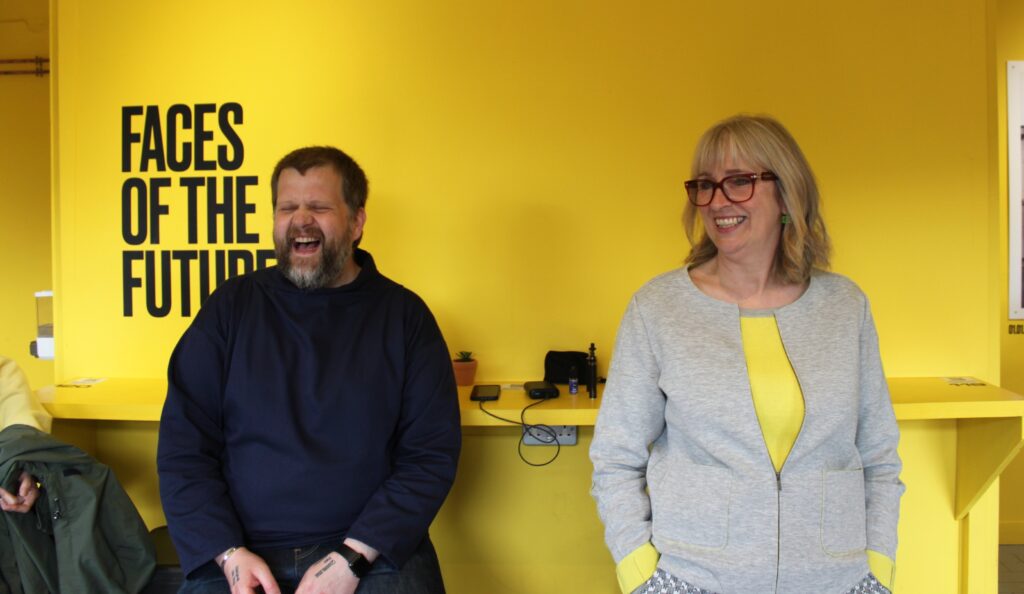Why Commissioning needs Radical Procurement

In 2011, Sir Frances Maude, then Minister for the Cabinet Office, determined that strong skills development was required at all levels of government to enable public servants to harness the power of the market with confidence and deliver achieve real, meaningful outcomes on the ground, by commissioning procurement. The Commissioning Academy was established in response to that ambition. Over 1,200 senior decision-makers and practitioners from across sectors have graduated from the Commissioning Academy since 2013, including participants from:
- the Cabinet Office, FCO, Home Office, Ministry of Defence, Ministry of Justice, DWP, DCMS, Department of Education and the Department of Health — among others;
- most major local authorities as well as CCGs, PCCs and the Police
Since 2016 the Commissioning Academy has been delivered by the Public Service Transformation Academy — a not-for-profit social enterprise partnered with Connected Places Catapult.
In that time, we’ve come across a range of instances which show how procurement can be used to support truly radical change. Based on that experience, here are ten examples of ‘radical procurement’ that we think indicate a growing trend in entrepreneurial approaches to accessing and harnessing innovation in the public sector.
1. Spinning-out services and companies
Leicestershire County Council’s (LCC) vision for their Children’s Innovation Partnership (CIP) model was to co-invest, co-design, co-produce and co-deliver services that meet the needs of young people.
LCC took a creative approach to designing the procurement process, fully using the flexibility of the ‘light touch regime’ to engage with the market to develop a partnership model and a tender which aimed to assess the suitability of potential partners rather than procure a specific solution. LCC’s approach tapped the potential offered by the ‘innovation partnership’ concept introduced through the European Commission’s Social Business Initiative in 2015 but so far under-utilised in the UK.
Read more in the Public Service: State of Transformation 2019.
2. Bringing suppliers together
Plymouth City Council (PCC) has created an alliance to improve the lives of people with complex needs by supporting the whole person to meet their aspirations. PCC awarded a multi-million-pound contract to an alliance of local charities to provide services to people with complex needs (homelessness, drug or alcohol misuse, mental illness and offending). The contract is a new way of bringing together commissioners and services in a partnership where power and responsibility are shared collectively for the common good of people with complex needs.

The contract, which will run for five years initially with the potential to extend to ten years, enables the Council and other commissioners to build long term sustainable relationships with local charities and other service providers to plan for the future.
3. Generating social value
Bristol City Council established Bristol Energy in 2015 with ‘triple bottom line’ goals of:
- sustainable economic prosperity,
- reduction in social inequality and
- improved environmental performance.
The company now serves customers across the United Kingdom, offering 100% renewable tariffs, and aims to be “a force for social good” by reinvesting its profits back into the community.
By 2019, 79% of its energy supply was generated from renewable sources. The firm buys renewable power direct from the city’s wind turbines and solar panels in Avonmouth which provide an additional revenue scheme for the council and more local, green power generation for Bristol.
Electricity comes from community owned projects such as Thrive Renewables and Gower Power, giving an economic boost to renewable generation in the region. In partnership with Geneco, a local energy innovator, waste from one million Bristol people is turned into biomethane, an environmentally friendly green gas.
Furthermore, Bristol Energy say the estimated social value put back into the Bristol community in 2019 to be £7 million.
4. Multiplying investment
Procurement can play a catalytic role in attracting resources to collaboratively realise outcomes. The Belfast City Deal offered the Belfast Region the opportunity to undertake transformational investments that would generate and secure inclusive economic growth for current and future generations. The vision for the Belfast Region (which comprises Belfast City Council and five neighbouring local authorities) is, ultimately, to secure £1 billion in total for its City Deal from a range of stakeholders.

Securing funding from UK central government has in turn opened the channels to further investment from secondary and tertiary stakeholders, which include the Northern Ireland government and the local authorities involved, as well as additional investment secured from the private sector.
Supported by Connected Places Catapult, the City Region identified four key digital projects which could only be realised if private-sector funding was obtained for each project. Subsequently, the strategic outline cases contained letters of intent from eight potential private-sector partners (B4B Telecoms; RF Proximity; BT; EE; Microsoft Azure; Telcom and Pinacl; Belfast Harbour; Procul-IOT).
Read more in the Public Service: State of Transformation 2019.
5. Focusing spend locally
By working in partnership, developing new spending tools and changing spending behaviours public service organisations in Preston including the City Council, Lancashire County Council, the police service and local education bodies have grown the portion of their procurement pound spent in city and the county from 5% to 18%, and 39% to 79% respectively.
6. Cultivating future innovation
Central government department increasingly share their pipeline of future requirements, without obligation, to signal to suppliers what they may be seeking from the market in the medium and long-term. In parallel, the MOD continuously scans the market for innovations that could be relevant to their clients emerging and potential requirements, investing in SMEs with promising ideas.
7. Working with the wider system
Thinking about outcomes, for example clean streets, a council could simply procure a street cleaning contract. Or they can think about multiple factors influencing the bigger picture, including the position of bins, when they are collected, whether the architecture of local buildings encourages wind alleys, and how the community can get involved in preventing litter dropping. This wider perspective shapes procurement requirements, and how resources are prioritised.
8. Commissioning collaboratively
The intention driving accountable care is for the various organisations from the health and care system work together to improve the health of their local population by integrating services and tackling the causes of ill health.

It marks a shift away from policies that have encouraged competition towards an approach that relies on collaboration between the different organisations delivering care — such as hospitals, GPs, community services, mental health services and social care — and the organisations paying for it — including clinical commissioning groups (CCGs) and local authorities.
Not least, accountable care will accelerate the implementation of new care models designed to integrate care and promote population health. Hence, rather than being based on annual contracting rounds as it is currently, commissioning is likely to become more strategic, focusing on the planning and funding of new models of integrated care.
9. Flexing payment around population risks and outcomes
As new care models emerge, built around patients rather than organisations or services, appropriate payment models need to be in place to support them.
Rather than paying providers based on activity, ‘capitation’ allows commissioners to reimburse providers for making available specified services and possibly delivering specified outcomes for a defined target population, drawing on services that cross different organisational boundaries to meet individual patient needs. Commissioners pay the provider or network of providers a regular lump sum per person in the target group. Ideally, this capitated payment will be weighted or risk-adjusted, to take into account of the fact that some patients in the groups require more (or more costly) services than others.
Commissioners may have dialogue with the bidders in relation to payment mechanisms as part of the procurement process and minimise procurement risk by stating that the contract value or payment mechanism may be subject to change, and provide a list of non-exhaustive options as to the types of changes that may occur during the term of the contract.
10. Keeping competition alive through ‘contestability’
For some years, the New South Wales government used the threat of private sector competition as an instrument in reforming prison management. In this case, a rough benchmark and potential competition came from a privately-managed prison that was delivering a comparable service at a significantly lower cost.
For prisons that were public-managed, ‘contestability’ was the credible threat of competition — the clear prospect of the intervention of alternative providers if the incumbent’s performance was unsatisfactory. Contestability seeks to get the best from public service ethos and private sector innovation.
This is therefore different from old-fashioned public sector monopolies, but also from enforced competitive tendering where the primary consideration often becomes price and from outsourcing, where the governing assumption is that private sector is best.
See Public Service: State of Transformation 2018 for more detail.















